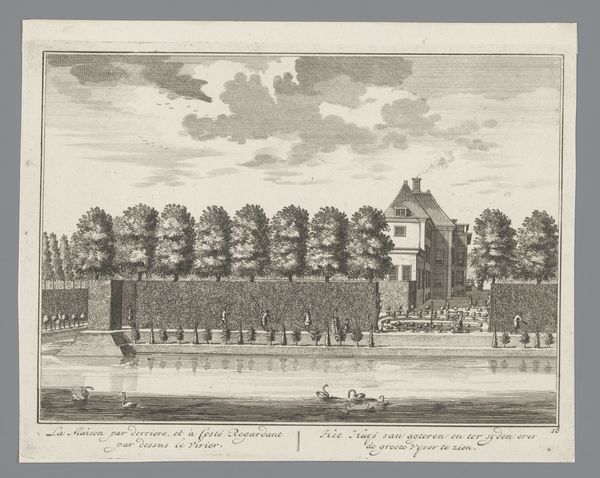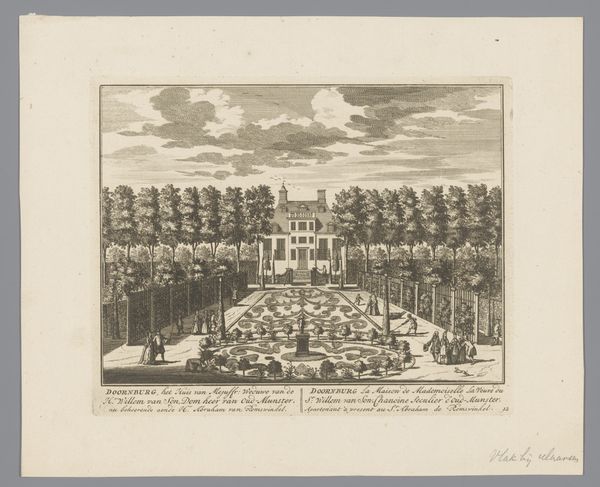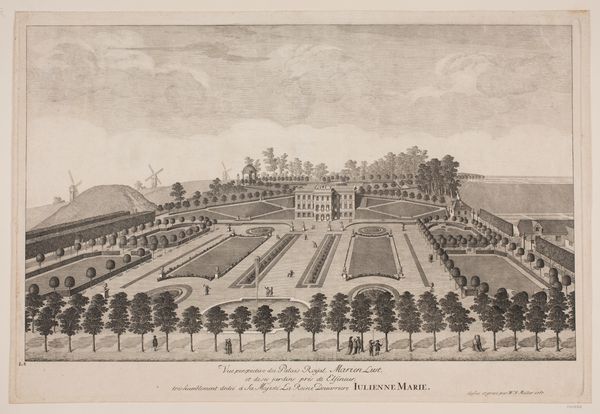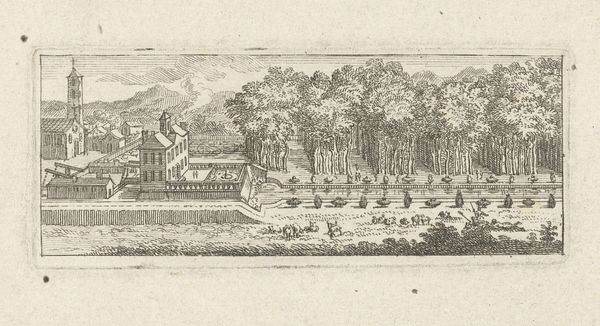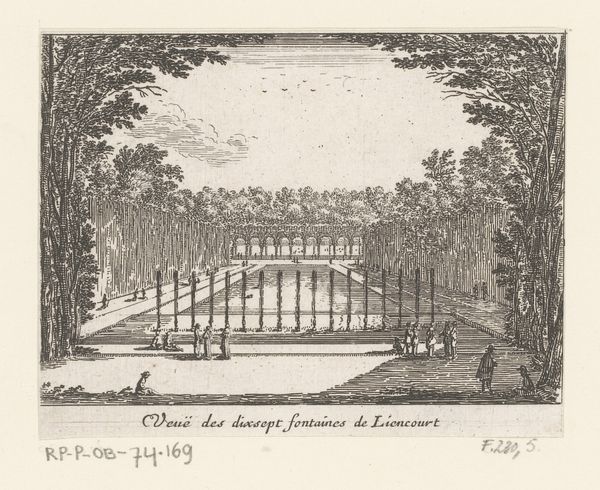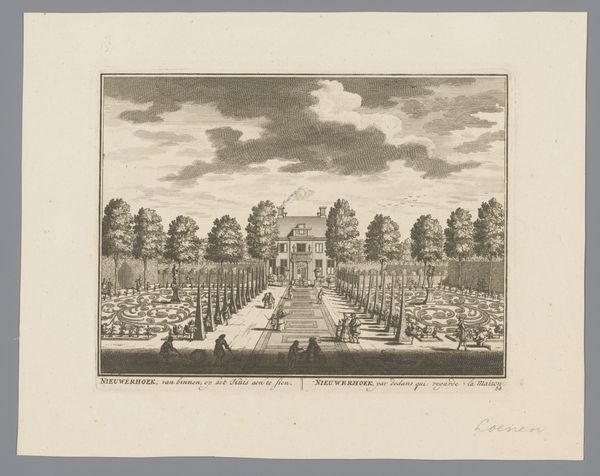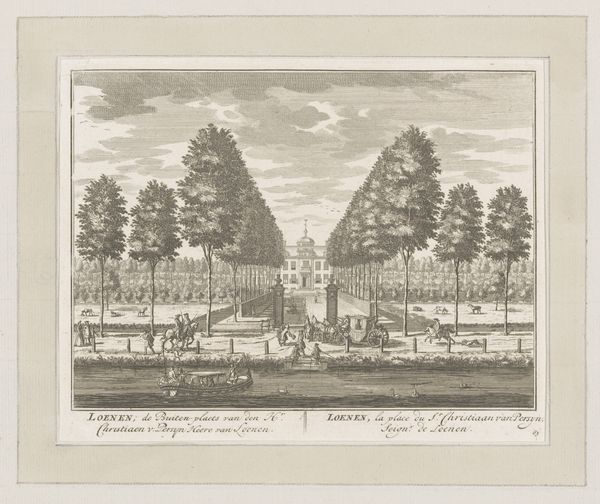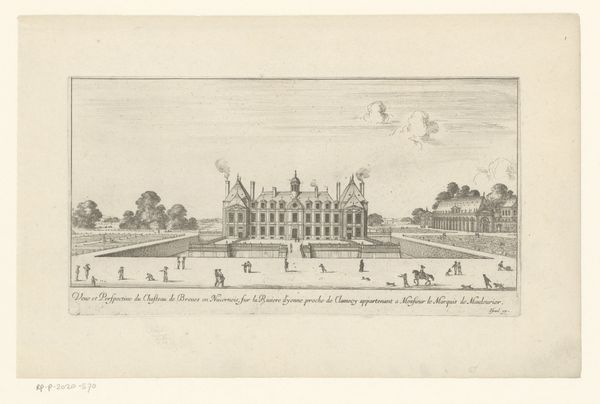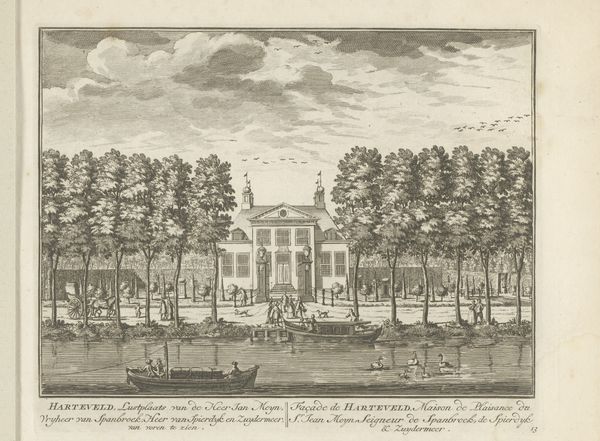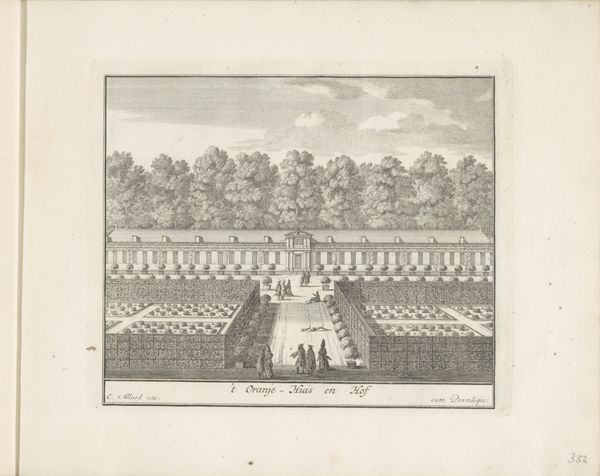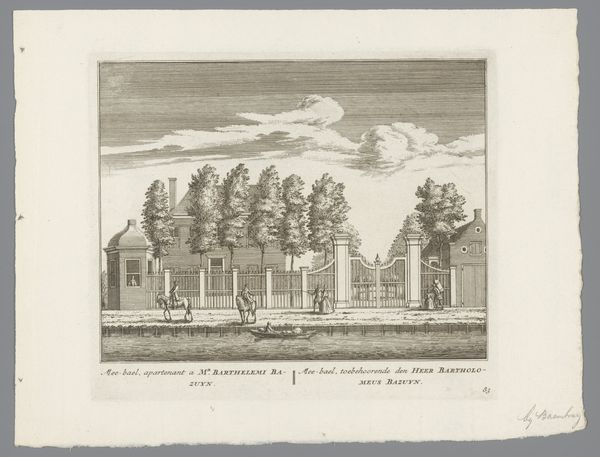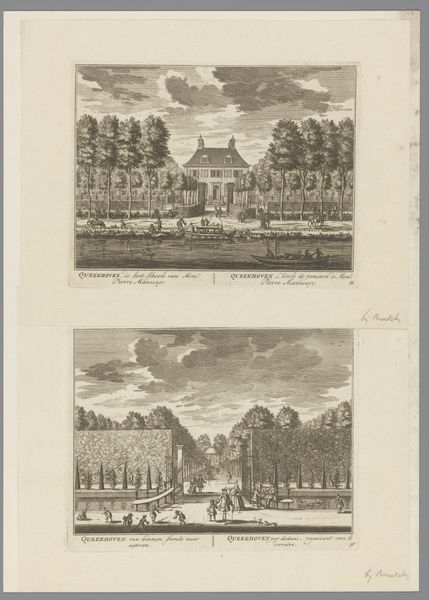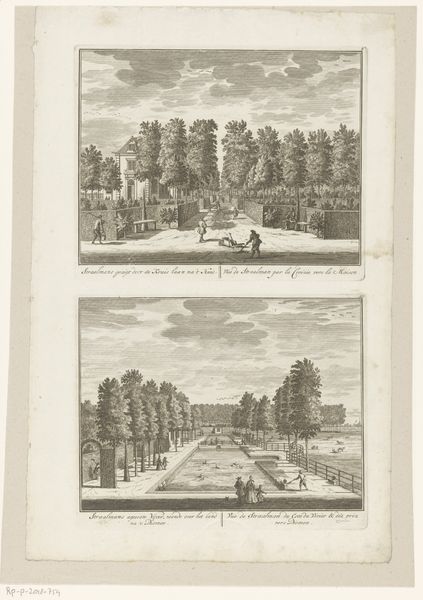
print, etching
#
baroque
# print
#
etching
#
landscape
#
etching
#
cityscape
Dimensions: height 300 mm, width 423 mm
Copyright: Rijks Museum: Open Domain
Curator: This etching, "Gezicht op het Plein in Den Haag" from 1758 offers us a fascinating snapshot of a specific time and place. Iven Besoet, the artist, meticulously depicts a cityscape. Editor: It's so detailed! What strikes me is the ordered nature of everything – the rows of trees, the architecture… what do you see in it? Curator: Well, consider the context. This isn’t just a pretty view. The Plein, or “Square,” in The Hague was a politically charged space. Etchings like these weren’t just art; they served as visual documents. Think about how this image presents power and order. Editor: So, the symmetrical layout... the neatly arranged trees... it's all about projecting an image of control? Curator: Exactly! These landscapes functioned almost like propaganda. The buildings likely housed governmental institutions, subtly reinforcing authority. Look at the small figures. Does this etching celebrate the individual or a collective sense of order? Editor: It definitely emphasizes order over individuality. The people are so small and almost blended in. It gives this sense of imposed harmony on both the city and its citizens. Curator: Precisely. This print gives us insight into how those in power wished to present themselves and their governance. Who commissioned this piece probably offers more insight as to why Besoet chose to focus on these specific attributes of The Hague. Editor: That’s fascinating. It shifts my understanding from simply appreciating the aesthetic to thinking about how the artist played a role in shaping public perception. I never looked at art in the light of power before! Curator: Seeing art as a part of cultural context truly enriches our understanding. It ceases to simply be a representation of a place, and starts telling a more in-depth, nuanced, historical tale.
Comments
No comments
Be the first to comment and join the conversation on the ultimate creative platform.
